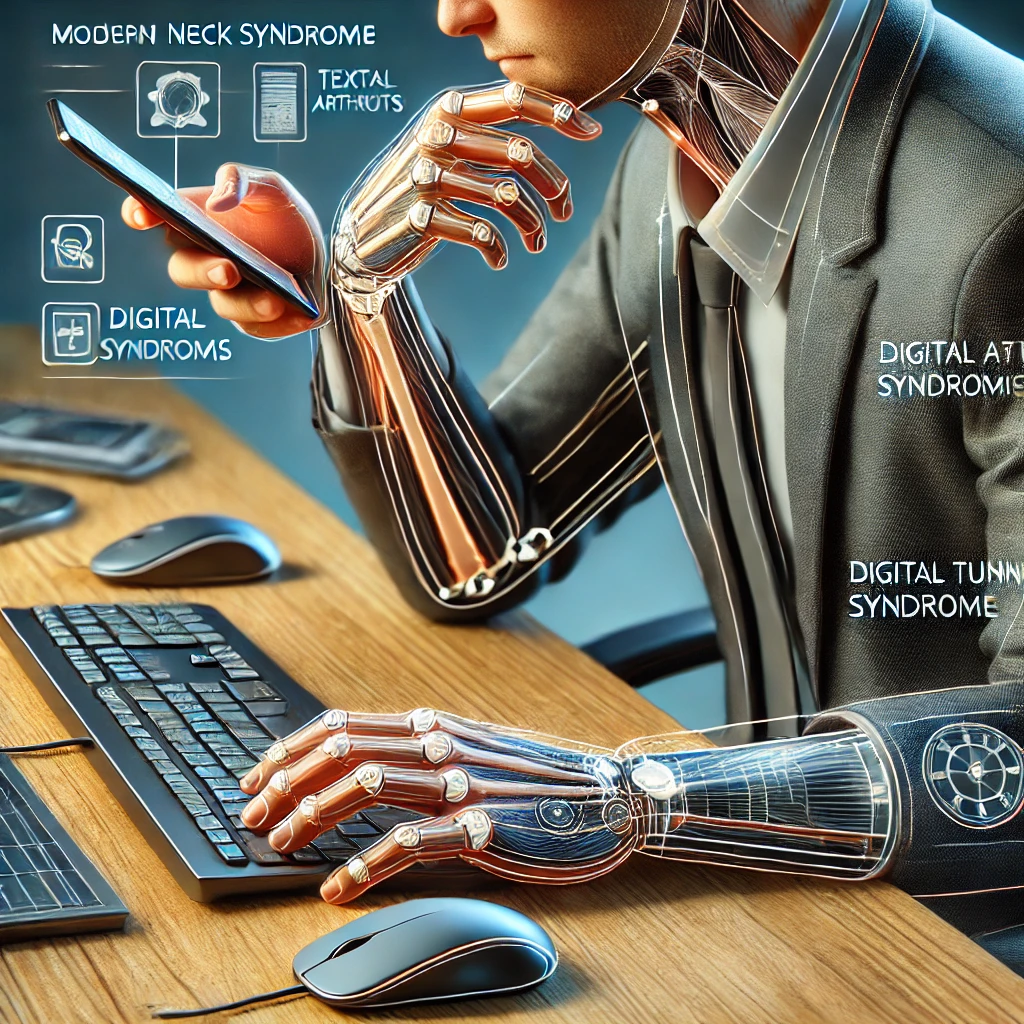In recent decades, our lives have been transformed by the rise of digital technology and mobile devices. While technology has enabled greater productivity and connectivity, it has also introduced new health issues. A sedentary lifestyle, now a staple of modern living, is increasingly causing chronic pains and discomforts that were virtually unknown just a few decades ago. Conditions like “text neck,” thumb pain, and computer-related wrist syndrome are new forms of pain in the digital age that are starting to impact our well-being. These emerging conditions require greater awareness and new approaches to understanding and treatment.
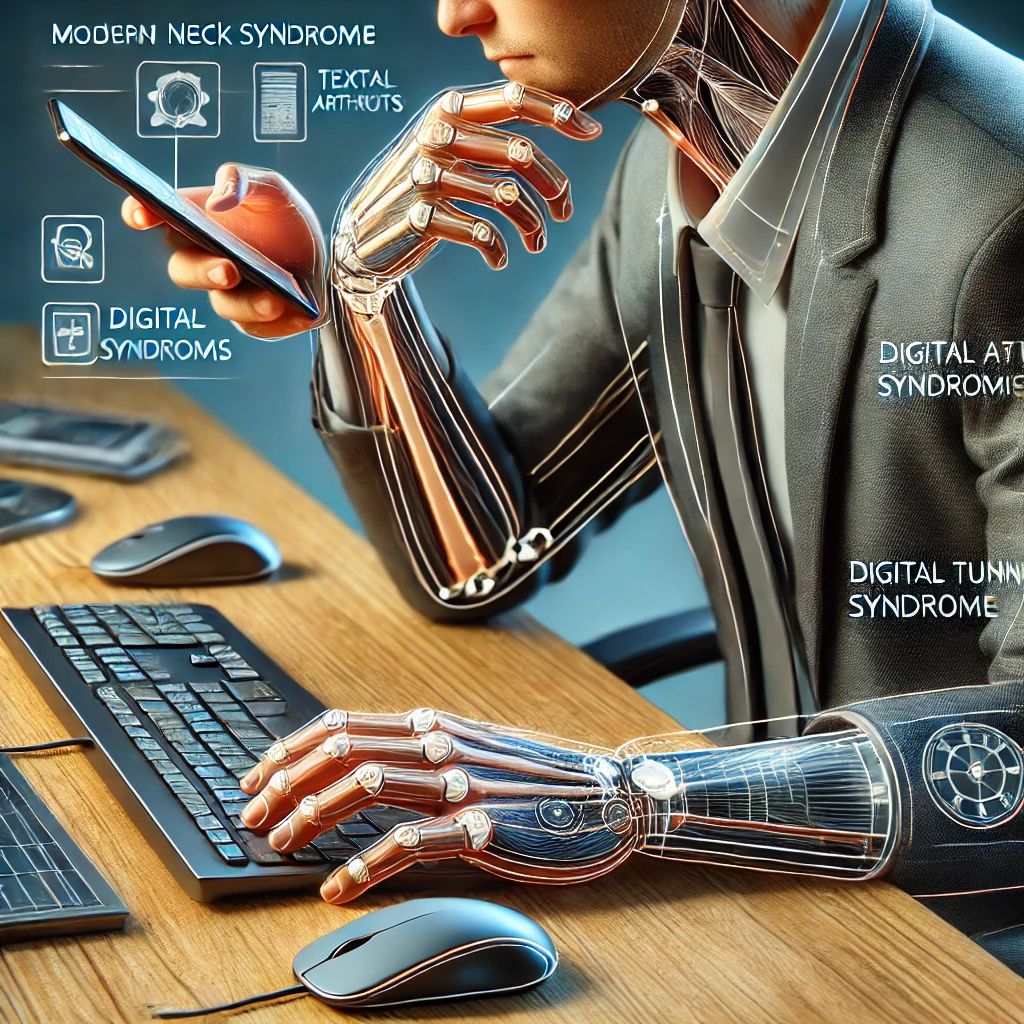
A sedentary lifestyle has seen a sharp increase with the rise of digital technology and the proliferation of mobile devices. People today spend a significant portion of their time sitting in front of computers, holding smartphones, or using tablets. These seemingly harmless habits are, in fact, taking a serious toll on our bodies.
New Forms of Pain in the Digital Age: Text Neck Syndrome
One of the newest phenomena directly linked to mobile device use is the so-called “text neck.” This condition arises from the constant forward tilt of the head while using phones and tablets. Given that the head weighs around 10–12 pounds (4–5 kg), every time we tilt it forward to look at a device, we increase the load on our neck and upper back. Over time, this can lead to chronic pain, stiffness, and even structural changes in the muscles and spine.
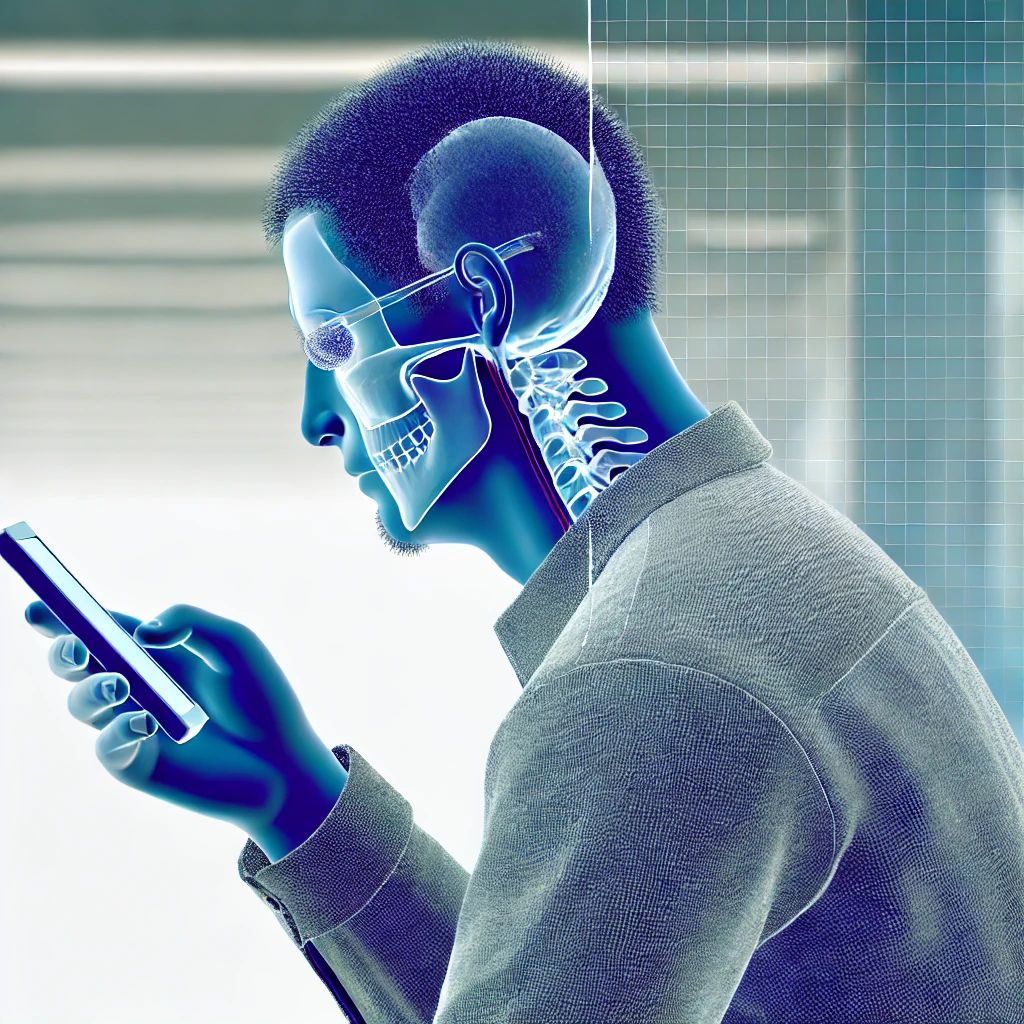
New Forms of Pain in the Digital Age: Thumb Pain and Digital Arthritis
The increased use of smartphones for texting and browsing the internet has led to a new form of pain—thumb pain, caused by the excessive use of the thumb for typing. This condition can develop into digital arthritis or inflammation of the joints in the hands, resulting in persistent discomfort. While this pain may seem temporary, for some individuals, it can evolve into a chronic issue.
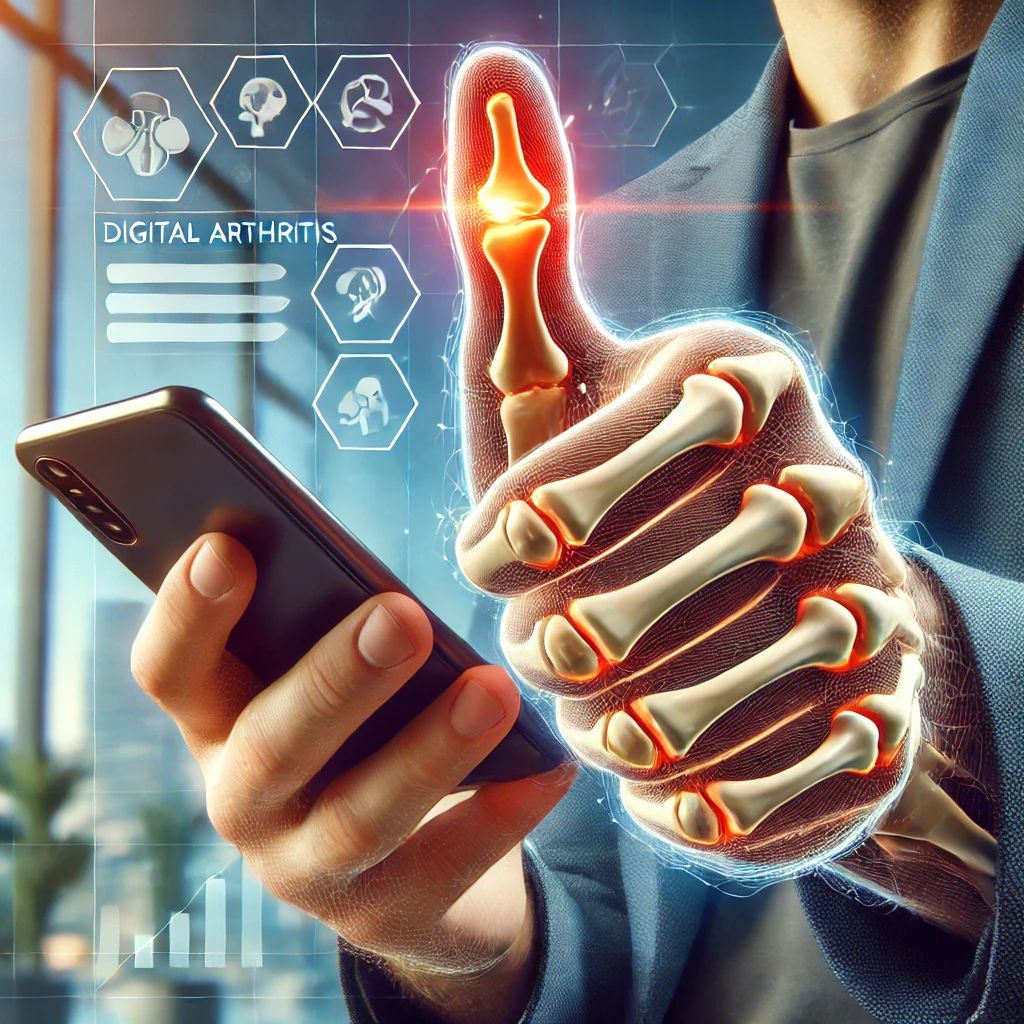
New Forms of Pain in the Digital Age: Computer-Related Wrist Syndrome
Prolonged sitting in front of a computer, especially without proper ergonomics, places additional stress on the joints and muscles of the hands. The computer wrist syndrome, or carpal tunnel syndrome, is one of the most common conditions among people who work on computers. It occurs due to compression of the nerves in the wrist, causing pain, tingling, and weakness in the hand.
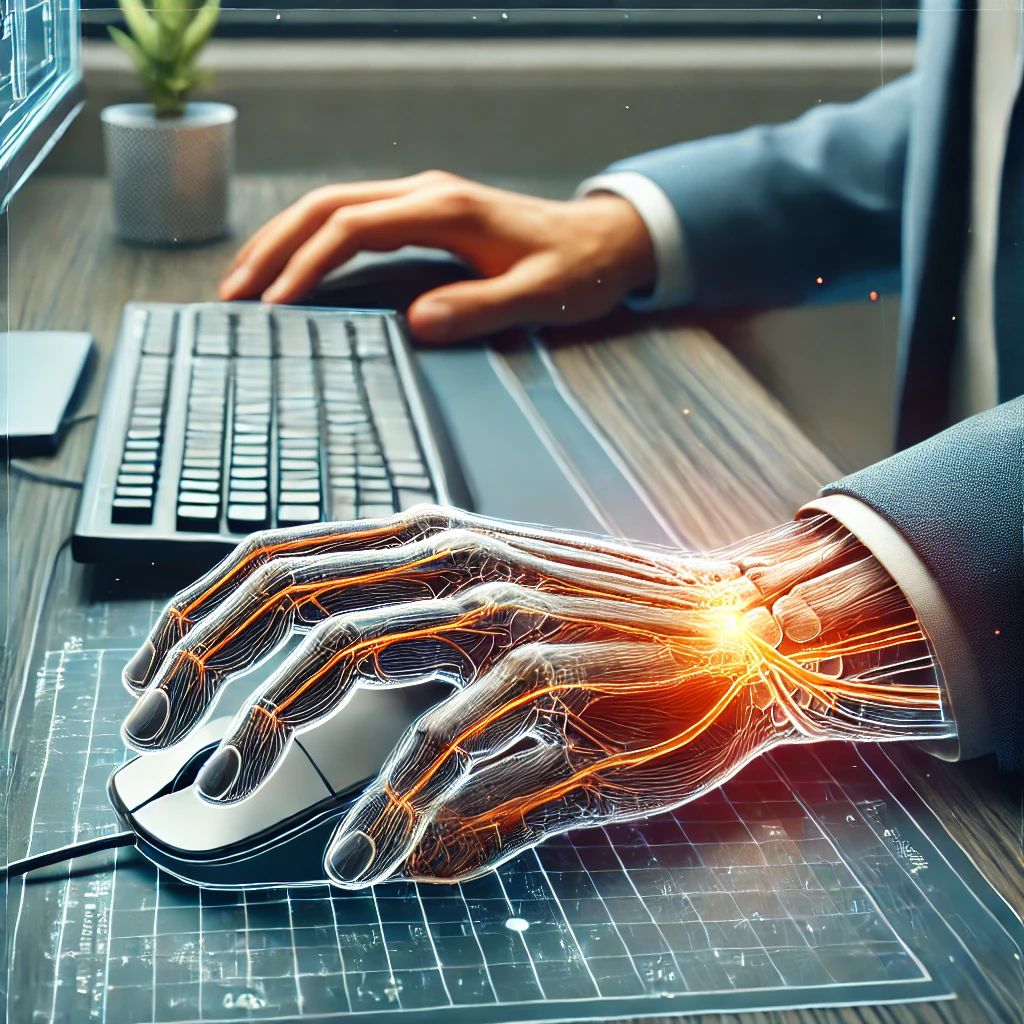
These new forms of chronic pain are a result of habits that have become an integral part of modern living. Unfortunately, they are often ignored until they turn into serious problems. To prevent the development of these conditions, it’s essential to adopt preventive measures, such as improving workspace ergonomics, incorporating regular physical activity, and taking frequent breaks from digital devices.
The digital age has brought tremendous benefits, but also new challenges to our health. A sedentary lifestyle, driven by constant use of technology, is leading to new forms of pain and discomfort that demand attention and preventive strategies. By raising awareness of these conditions and adopting healthier habits, we can protect our bodies from chronic pain and adapt modern life in a way that is not detrimental to our well-being.
For more information on the impact of a sedentary lifestyle, visit the WHO’s guidelines: Physical Inactivity: A Leading Cause of Disease.
For more information on reducing sedentary behavior, visit the CDC’s recommendations: Ergonomic Practices for a Healthier Lifestyle.
More Useful Links:
Micro-Breathing Breaks: How Short Conscious Breathing Pauses Help Regulate Stress and Energy
The Personal Connection with Nature: How Nature Transforms Our Physical and Mental Health
Digital Detox: How Disconnecting from Technology Can Boost Creativity
Working from Home: Healthy Habits for Productivity and Well-being
Joint and Spine Health: Simple Exercises to Improve Mobility and Prevent Posture-Related Issues
